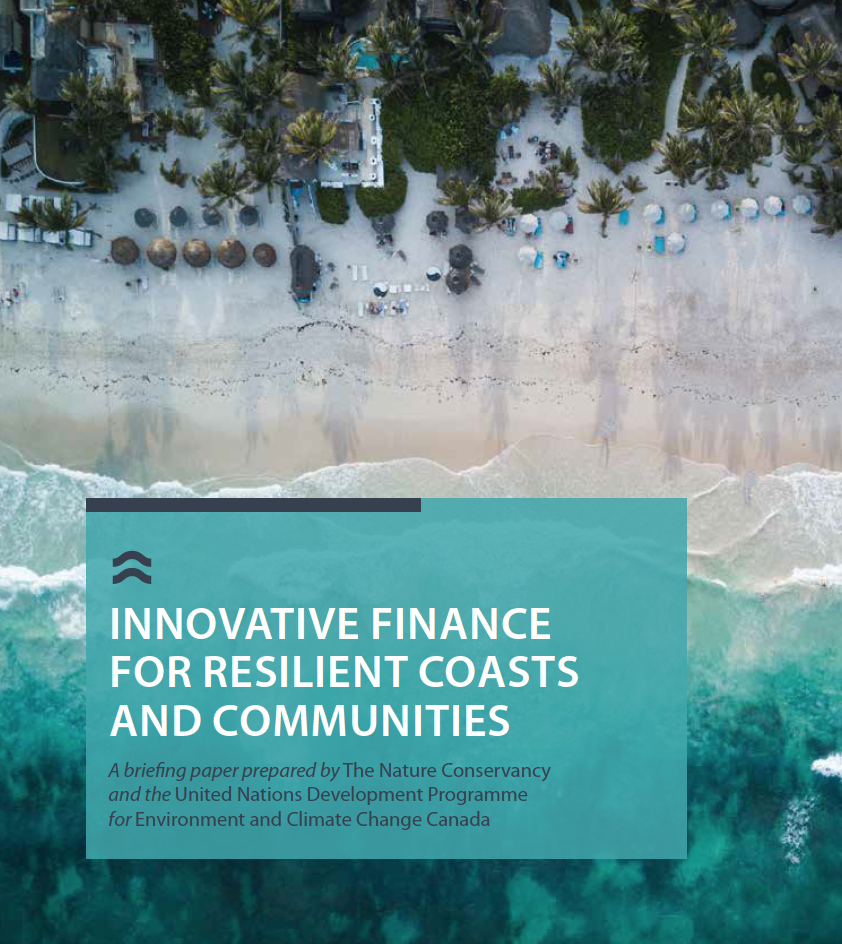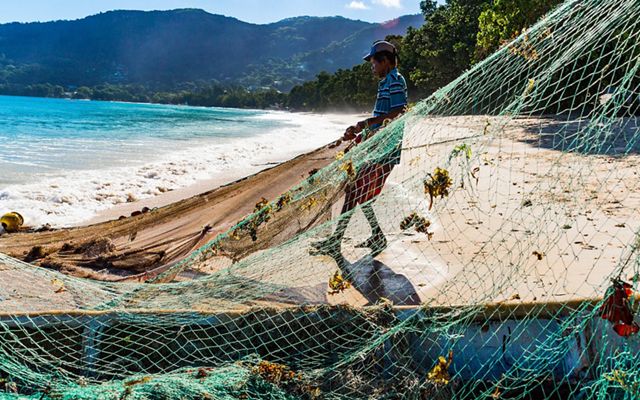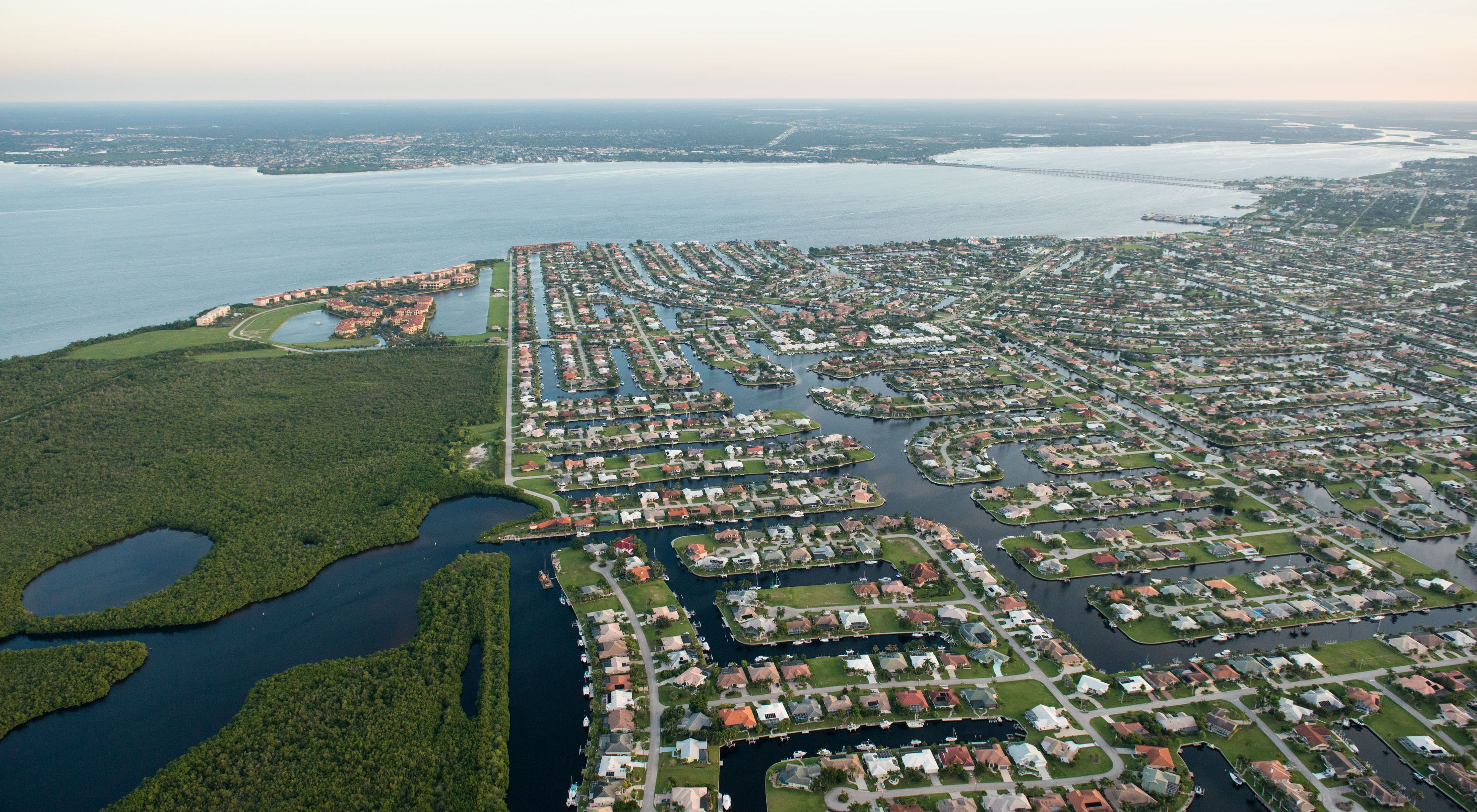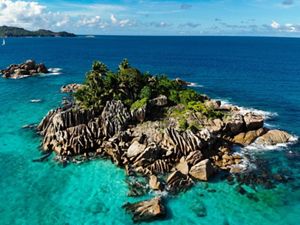Building Coastal Resilience Through Innovation
Andrew Deutz, The Nature Conservancy & Jan Kellett, United Nations Development Programme
Key Takeaways
Coastal zones are home to 60 percent of the world's population, as well as crucial economic resources and priceless ecosystems.
However, these regions are increasingly threatened by the impacts of climate change, and government funding alone is insufficient for building resilience in coastal communities.
Innovative finance mechanisms can offer new funding streams for this work, but there's still much to do before we can move from pilot projects to wide-scale implementation.
Insurance and infrastructure generally rank toward the very bottom of the list of fun and interesting things people like talking about. Beaches and coral reefs, on the other hand, are more engaging subjects.
This one reason why climate risk insurance and insuring “natural infrastructure”—such as mangroves, coastal wetlands and coral reefs—has become quite a hot topic, including at the G7 Environment Ministers meeting this year.
Why the strong interest?
Coastal zones are absolutely critical to people’s lives and the planet. They are avenues to trade and communications; they provide resources and livelihoods; and they are often centers of economic growth, through industries like tourism, shipping, fishing and mineral extraction.
The ocean economy, covering broad categories of employment and ecosystem services, is estimated at US$3—6 trillion a year. And these areas are, of course, centers of population: half the world’s population lives within 60 kilometers of a coast.
But these critical zones are under intense threat. Our changing climate is making sea levels rise and flooding more frequent. Storms are intensifying in severity, underground water sources are increasingly contaminated by salt water intrusion and coastal waters are increasing in temperature and acidity.
These increasing climate effects means we need to constantly renew our understanding of the risks we face in order to protect ourselves. The World Bank recently estimated the impact of extreme natural hazards to be equivalent to losing US$520 billion in annual consumption globally, forcing some 26 million people into poverty each year.
-

Innovative Finance for Resilient Coasts
This briefing paper, prepared in partnership with the United Nations Development Programme, considers how scaled up investments in coastal areas can support community resilience to climate change.
DOWNLOAD
How can we cover the costs of these natural hazards and climate change impacts?
Government funding has not kept pace with the growing need to both reduce risks and build resilience to natural hazards such as tropical storms. Public budgets aren’t healthy enough to finance post-disaster cleanups, and most importantly, to fund the planning and implementation of preventative measures.
Fortunately, the World Bank report indicates that in the countries it studied, approaches such as insurance policies would help save US$100 billion a year and reduce the overall impact of natural hazards on well-being by around 20 percent.
New streams of finance: UNDP and The Nature Conservancy joint study
At the G7 Environment Ministers meeting in Halifax, Canada, in September, UNDP and The Nature Conservancy presented a joint study looking at how new and scaled up investments in coastal areas can build the resilience of countries and communities and increase their capacity to cope with climate change.
It examines some of the most innovative approaches to the mobilization of private capital for coastal resilience—particularly in Small Island Developing States.
These approaches include:
- insurance for natural capital: provides immediate funding for post-storm restoration of coral reefs and the services they provide; scalable from one pilot site in Cancun, Mexico, to multiple countries, providing insurance coverage that protects millions of people and billions of dollars in built infrastructure;
- regional risk pools: reduces the costs governments have to pay to insure countries against storms by up to half; currently covers 18 of 37 small island states and could expand to cover additional sectors like fisheries and utilities;
- green (or, more recently, “blue”) bonds: provides upfront capital for investment in coastal resilience, contingent on cash flows for repayment; huge potential for growth, contingent of clearer standards for what counts as “green” or “blue” investments;
- debt restructuring: provides cash flow for coastal resilience investments and could increase government budgets in indebted countries; scalable from a US$22 million innovation in Seychelles to potentially US$2 billion in restructurable debt across a dozen island states and well beyond that for coastal states.

Each of these mechanisms has the potential to be scaled up and make coastal areas around the world an attractive investment for certain private sector actors. But so far none have moved beyond pilot stage. This is the critical point: we urgently need to move beyond the science, beyond the pilots, to the roll out these credible ideas to threatened coastal communities.
But how do we most effectively scale up these projects to deliver them as widely as possible?
First, and fundamentally, we need the correct enabling environment for policy and financial structures. This means doing foundational work with local and national institutions to foster the conditions in which innovations can thrive and deliver.
Next, better data and metrics are needed to identify what programs work and why—we need to quantify how these program’s impact the environment and in turn peoples’ livelihoods.
And finally, we need all the right practitioners in the same room together. Governments, donors, the development sector and investors: all need to come together and share a vision for future resilience. Achieving the necessary, critical scaling of financial resources is above all else an issue of partnership.
Andrew Deutz, Ph.D., is the Director of International Government Relations at The Nature Conservancy and Jan Kellett is a Special Advisor on External Engagement at the United Nations Development Programme
-

Innovative Finance for Resilient Coasts
This briefing paper, prepared in partnership with the United Nations Development Programme, considers how scaled up investments in coastal areas can support community resilience to climate change.
DOWNLOAD
Global Insights
Check out our latest thinking and real-world solutions to some of the most complex challenges facing people and the planet today.


